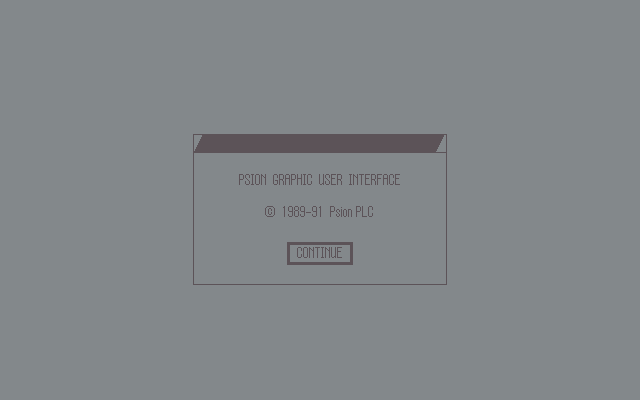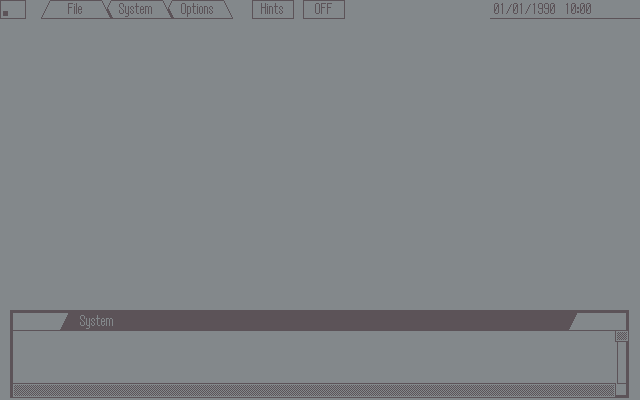The price disappeared after I bought the MC600 from the Pulster… I seemed to me that it was the last one available…
I still enjoying using it. But it is the DOS model (without the GUI).
The price disappeared after I bought the MC600 from the Pulster… I seemed to me that it was the last one available…
I still enjoying using it. But it is the DOS model (without the GUI).
davidb
For that reason I’d love to see an MC400 emulator ![]() The user interface is clean and simple and I would love to see it preserved for posterity in some sort of emulation environment.
The user interface is clean and simple and I would love to see it preserved for posterity in some sort of emulation environment.
I’ve imaged the ROM of one of my dead machines… ![]()
Edit: Ah, I see you’ve already started! I didn’t see initially that the post below is yours…
I found an interesting recent post about an adventure which may yet bear fruit:
Yeah, that’s me - I’ve started but my skills run out at:
![]()
I have the ROM image, I have the HDK/SDK from Alex Brown’s Psion Documentation Project (via his Hackaday page “The Last Psion”) and that’s about it :-d
And by the way, these machine do not use the 8088 as the title suggests. In common with the Series 3/3a, HC & Workabout ranges they utilise the 80C86.
Looks like an emulator might be starting to come together - watch the action over on stardot with Pernod and @zedstarr finding their way…
Looked promising:

but brick wall now hit with lack of documentation for the custom ASICs ![]()
I’m contemplating whether it’s worth trying twitter/LinkedIn/Facebook groups to see if any ex-Psion/Symbian engineers can help. But it’s ~30 years ago this stuff was current ![]()
This is great!
I think it might worth to try…
Perhaps slightly OT, but as I’d somehow missed that the MC line was a precursor to the whole palmtop adventure, as penance I offer this history:
3-Lib History of Psion
I remember picking up a glossy promotional brochure for the MC line - it was A4 sized and when you opened it up it looked just like the MC400, full-page pictures of the screen on the left page/keyboard on the right. This must have been 1989/1990 ish. I was instantly hooked ![]() At that time having a truly portable computer this size blew me away! I’d used “luggable” PCs at work (something like this luggable Compaq 386 ) and knew smaller was better
At that time having a truly portable computer this size blew me away! I’d used “luggable” PCs at work (something like this luggable Compaq 386 ) and knew smaller was better ![]()
Finally got round to re-purposing the keyboard from the dead MC400 as a USB keyboard - thanks to Frank Adams’ Teensy LC sketch I worked out the matrix and managed to hack it around into actually working as a USB keyboard ![]() [Apologies for the slow one-handed typing - not easy when holding the phone in the other hand
[Apologies for the slow one-handed typing - not easy when holding the phone in the other hand ![]() ]
]
My Teensy LC code is here
A little more progress:

My MC400 collection is now up to 4! …but all 4 have LCD faults:
2 of them have serious “screen rot” (or LCD “cancer” or “bleed” depending on who you ask!) - looks like mechanical failure of the frontmost layer (polariser?)
1 has a screen that is completely off/dead - I haven’t looked but surely that’s just a cable/connector fault.
1 has a 2 or 3 pixel wide line of dead pixels halfway up the screen - I think is again a connection issue between the PCB and the glass substrate (I remember these little jelly pads with carbon conductors in the when taking apart LCD screens in my youth ![]() )
)
1 of the machine’s keyboards had been battered, it looks concave in the middle and another machine has a really quiet speaker.
Surely I can piece together 1 good machine from the 4… but I need t set aside a couple of days maybe to do it properly.
For central creeping blackness, one suggested solution is warmth - face down in sunlight, on a radiator, or in an oven on a very low heat - see the final two minutes of this video:
the success recipe seems to be 90min @ 85C, where small temperature changes made a huge difference
(via)
Dead rows or columns are of course something else - perhaps a failed flexible connector?
And any creeping blackness from the edges of an LCD could be a leak or a seal failure.
Thanks, I’ll try that.
Someone also sent me a link to this - https://www.youtube.com/watch?v=RyspNW3G-yE
Which is basically rubbing with a cotton bud, I wonder if the friction causes enough localised heat to do a similar thing? I tried rubbing my screen with a cotton bud but it only seems to have redistributed the splodges, not got rid of them.
after a 90 min session at 85C, then a 90 min session at 95C:
All that seems to have happened so far is the blotches have coalesced ![]()
I baked the whole assembly - there are 8 x 3.3uF 50V electrolytics on the PCB - if the baking fixes the screen they’ll definitely need replacing.
Hmm. I wouldn’t go any hotter, but it might be worth one or two more cycles? Comparing photos will tell you whether it’s making progress in the right direction.
Is it a bit smaller? It looks like it might be…
I’d say so, as well. But not as much that it would be really encouraging…
Last week I was on a work trip in Central London and couldn’t resist visiting Psion’s old London HQ…
Some updates on the emulation effort: